En estos "vis a vises" que entablo con humoristas de distintas manifestaciones artísticas y de diferentes países, para publicarlas aquí, en Humor Sapiens, es la primera vez que invito a un brasileño. No sé por qué, ya que el humor en Brasil tiene un alto nivel de calidad. Me disculpo por ese pequeño olvido. Aunque, sin ánimo de justificarme, hace unos años entrevisté a unos cuantos para otra sección y también aún es relativamente nuevo este espacio vis a vis con la vis cómica" (por eso dije “un pequeño olvido”).
Bueno, esta introducción se debe a que tengo el privilegio, el honor y el placer de conversar hoy con el amigo Silvano Melo. ¿Por qué lo escogí a él? Bueno, en el 2015 lo entrevisté (en la sección que mencioné ya) y sus respuestas me gustaron mucho. Por ejemplo, a mi pregunta ¿el humorista nace o se hace?, me respondió: “Creo que nace con una vocación y con el tiempo desarrolló este talento a través del trabajo duro y dedicación”, algo que comparto 100% con él. Pues me mantuve siguiéndolo y admirando su trabajo (me encantan sus caricaturas) y hace años que estamos conectados.
Así que ahora les presento, para los pocos humornauttas de Humor Sapiens que no lo conozcan, a Silvano Rosa Goncalves de Mello (firma su obra con el seudónimo de “Melo”). Este humorista nació…
PP: Perdón, mi querido amigo, pero estos formalismos me matan. Así que te pido, ¿podrías presentarte tú mismo? Ya sé que no es fácil hablar públicamente de uno, pero sácame de este apuro, por favor.
MELLO: ¡Hola maestro! Tiendo a pensar que nací dibujando. Recuerdo tener 4 o 5 años y hacer mis dibujos en la vereda, con carboncillo y ladrillos. Dibujar siempre ha sido parte de mi vida. En unos momentos con mayor intensidad, otros con menos. Vivo en un pueblo muy pequeño, llamado Jaboticatubas, en el estado de Minas Gerais, y la gente aquí está orgullosa de ver mis dibujos en todo el mundo. Confieso que decidí dedicarme al humor gráfico muy tarde, recién a partir del 2007, pero desde entonces utilizo mis dibujos como mi forma de expresión, como herramienta para hacer pensar, para provocar la reflexión, y en ocasiones para provocar unas risas pequeñas.
PP: Bueno, sabes que soy de la opinión de que siempre se busca hacer reír o sonreír, o incluso “sonreír” interiormente, o si no, no es humor lo que hacemos. Claro, mientras más mezclas los elementos para hacer pensar, los elementos críticos, baja el % de comicidad en la obra, pero no puede desaparecer la comicidad. Incluso se hace más fuerte el mensaje logrando también aunque sea una sonrisita. Y creo que tú consigues siempre todo eso con tu trabajo. A propósito, ¿ha variado, ha evolucionado, su forma de hacer humor desde sus inicios hasta este momento?
MELLO: Sí, sin duda. Hubo una evolución, un cambio, tanto en la línea como en la forma de expresión. Al principio, mi intención era solo hacer reír, hacer una broma, con un rasgo más cómico, con personajes con narices grandes, sin mucha preocupación por la estética. Hoy mis dibujos son diferentes en cuanto a estética, líneas y el mensaje que transmite es mayormente crítica, pero si logra hacer reír a la gente, ¡mejora aún más!
PP: Eso te decía, lo logras. Porque estéticamente tus dibujos son buenos, haces reír y sonreír y haces reflexionar sobre cada tema. Pero, ¿eso surgió solo en ti, o crees que tienes influencia definida, clara, de colegas brasileños vivos o históricos?
MELLO: Las influencias son inevitables. Creo que tengo muchos, tanto brasileños como extranjeros. Los grandes maestros nos inspiran, nos muestran un camino a seguir hasta conseguir caminos con nuestras propias plumas, nuestros propios pinceles. Sin duda, podría nombrar a muchos de los que me influyeron, pero solo mencionaré algunos para no extenderme demasiado: Ziraldo, Cau Gomez, Saul Steinberg, Quino, Dalcio, Boligán, Kambiz Dembakhsh, entre muchos otros.
PP: Es bueno que sean muchos, pero sé de alguien que también te influyó (me lo has dicho tu mismo en otras ocasiones): mi amigo Ares. Bueno, entonces ya podemos decir que tienes una sólida y fructífera carrera, por lo tanto, te pregunto: ¿cuál ha sido el mejor y el peor momento en tu carrera dentro del humor?
MELLO: No es posible estar bien todo el tiempo. Somos humanos, llenos de defectos, tenemos estrés, nos enfadamos con el perro, perdemos la paciencia con el jefe en el trabajo, con el bus atrasado y muchas otras cositas de la vida cotidiana. En cualquier carrera tenemos nuestros momentos de euforia y desánimo. Creo que mi peor momento al trabajar con humor es la falta de creatividad, la falta de ideas, una buena idea, un buen chiste, una crítica efectiva. Mi trabajo tiene que tener esta función, hacerte pensar, reflexionar y, a veces, hacerte reír. Si eso no fluye, es una lástima. Pero cuando estas ideas fluyen, todo sale bien y es simplemente un placer hacer lo que más me gusta hacer: ¡dibujar!
PP: Esos momentos “malos” los tenemos todos, no te preocupes. Ahora quiero saber lo siguiente: tiras cómicas, viñetas de humor general, sátira política, caricaturas personales, humor editorialista… ¿Cuál te es más difícil de hacer? ¿Con cuál de ellos disfrutas más en tu creación? ¿Por qué?
MELLO: Me siento bien haciendo el humor general, el dibujo de humor con enfoque crítico, cuyo tema, la idea puede ser cualquier cosa, cualquier situación: niños, medio ambiente, internet, redes sociales, política, derechos humanos, guerra, paz, familia, animales, etc.
Creo que lo más difícil para mí es la caricatura personal. La caricatura no debe ser solo un retrato divertido, una broma con alguien, sino que debe traer el alma del personaje, su personalidad, su esencia y eso es muy difícil de lograr. Hay grandes maestros en esta área, a los que admiro mucho, ¡pero para mí es una batalla más difícil!
No es que no me guste dibujar en estas otras áreas. Hago un poco de todo, pero dibujo de humor es donde me siento bien, libre!
PP: Perfecto. Amigo mío, ¿podrías ahora contar una anécdota ya sea graciosa, o ingeniosa, o curiosa, que hayas vivido dentro de tu carrera en el humor?
MELLO: No puedo decir que sea una anécdota, pero una situación que me llena de orgullo. Me invitaron a exponer mis dibujos en una escuela con motivo del Día del Libro. Ese día muchas personas, la mayoría de las cuales ya me conocían de vista, se enteraron de lo que era un dibujo de humor y que yo hacía tales dibujos. ¡Todos estaban asombrados y querían saber mi historia, la historia de mis dibujos y el significado de cada uno de ellos!
A partir de ese día, mi pueblito entró en la historia del humor gráfico y me convertí en un orgullo para este pueblo y este lugar que tanto amo!
PP: Tienes razón, no es una anécdota, pero si fuera yo también la habría contado. Dime una cosa, como profesional del humor, ¿se ríe fácil? ¿Con qué tipo de chistes?
MELO: A veces digo que soy un poco demasiado en serio, pero no lo creo. Me encanta reír y por lo general se pasa a una buena broma, bien contada, directamente, o viendo una buena historieta, un bueno y inteligente dibujo de humor.
PP: Querido colega, sabemos que el trabajo ideal del humor gráfico es el que muestra una factura perfecta y un contenido que nos hace sonreír y pensar. Pero a menudo vemos una magnífica idea expresada con una factura pobre y viceversa, un trabajo impecable en términos de forma, pero con una idea débil. ¿Cuál de estas dos últimas variantes acepta mejor? ¿O ninguna o ellas? ¿Por qué?
MELLO: El humor gráfico ideal aparentemente debería ser el que tiene una buena idea con una muy buena estética, ¡pero esto no siempre es posible! ¡Pocos son los que logran hacer esto!
Yo creo que un dibujo bonito, con una estética bonita, no puede salvar una mala idea, pero una buena idea puede salvar un mal dibujo! La idea trae consigo reflexión, hacer pensar y el dibujo hace visual esa reflexión.
PP: Bueno, ahí estoy contigo 50 y 50; es decir, coincidimos que el humor gráfico ideal tiene que tener una buena forma y un buen contenido. Donde difiero es en que no soporto una buena idea hecha con un mal dibujo. No la puedo ver. Como tampoco una buena forma sin idea, claro. El mensaje que queremos transmitir en una obra, para mí repito, tiene que estar de buen nivel en todo, para que llegue más. Pero eso no significa que yo tenga razón, por supuesto. Obvio que nadie puede eliminar a nadie por esto o aquello. Y hablando del tema, ¿tenemos mucha censura en los medios y en el público de estos tiempos? ¿Mucha autocensura? Y para usar la pregunta de moda: ¿cuáles son los límites del humor?
MELLO: La censura, en alguna forma, siempre ha existido. Hoy, definitivamente ha empeorado. A veces el resultado, las consecuencias son violentas.
Algunos artistas, en cualquier ámbito, creo, por miedo a su libertad, a su seguridad o incluso a la seguridad de sus allegados, acaban autocensurándose para evitar tales consecuencias.
Yo creo que el límite del humor es donde acaba tu derecho y empieza el derecho del otro. No hace falta atacar, ofender para hacer humor.
El humor es un arma poderosa, para el pensamiento crítico, para la reflexión, para la risa, ¡pero nunca una herramienta para la falta de respeto, para la ofensa!
PP: ¡No puedo estar más de acuerdo contigo! Lo dijiste de forma excelente. Entonces, siguiendo esa línea, ¿cómo ves la salud del humor gráfico en la actualidad? ¿Ves más talento en sus creadores que antes? ¿Es cierta la queja de muchos colegas que alegan no tener espacios? ¿Internet es la solución? ¿Cómo ves el futuro en esta modalidad?
MELLO: Los grandes talentos siempre existirán. ¡Algunos van, otros vienen! Los recuerdos quedan. Cada época tendrá sus grandes artistas. Hoy, la censura quizás oscurezca un poco la aparición de buenos artistas, pero ciertamente hay muchos de ellos en todas partes.
Sin duda hay mucho menos espacio que antes. En Brasil, incluso los grandes nombres del humor gráfico ya no tienen espacio en periódicos y revistas.
Internet a menudo puede verse como un villano, pero también es la única opción para la gran mayoría de los dibujantes. A través de internet muchos logran dar a conocer su trabajo, participar en eventos en todas partes del mundo. Cada uno tiene que encontrar su propia manera de expresarse, especialmente en medio de las crisis que siempre han existido y existirán.
PP: Es cierto también. Bueno, ¿qué les aconsejarías a los que se inician en este mundo del humor gráfico?
MELLO: ¡Dibuja mucho! ¡En todo momento, en todo lugar! ¡Estudia, observa! Mira películas, lee, escucha música, ¡pruébalo! ¡Hazlo todo con dedicación y respeto! ¡Aprende a aceptar las críticas y utilízalas en tu trabajo, para tu crecimiento! ¡Haz de tu trabajo algo a lo que te dediques con placer y los resultados vendrán naturalmente, a su debido tiempo!
PP: Muy bien. Ahora, dentro del humor, ¿qué te gustaría hacer que no hayas hecho? (Incluso puede ser hasta incursionar en otras modalidades).
MELLO: A veces me vienen muchas ideas a la cabeza y espero que muchas de ellas se hagan realidad! ¡Quiero crear historias solo con imágenes, publicar un nuevo libro con mis dibujos e incluso, quién sabe, ilustrar libros para niños, ilustrar mis propios textos, mis propias historias!
PP: Pues viendo tu carrera, estoy seguro que lo lograrás, amigo mío. Y para ir cerrando este vis a vis, ¿Hay alguna pregunta que no te haya hecho y que te hubiera gustado que te hiciera? Si es así, ¿puedes responderla ahora también?
MELLO: Bueno, creo que me podrían preguntar: ¿qué es hacer humor gráfico?
Y mi respuesta sería: para mí es como decirle al mundo lo que pienso, como pienso, a través de imágenes que muchas veces dicen más que muchas palabras. Dicen, en mi caso, sin usar las propias palabras, haciendo de cada boceto algo universal, atemporal. Hacer humor gráfico es darle al espectador la oportunidad de ver el mundo, las situaciones que le rodean, los acontecimientos que guían su vida desde otro ángulo, con otra mirada, más crítica, personal, reflexiva y en ocasiones ¡también divertida!
PP: Gracias, amigo.
MELLO: En primer lugar, quiero decirle a mestre Pepe que me siento honrado de participar en este proyecto tan importante y estoy agradecido por esta oportunidad.
Siempre es genial ver a gente como mestre Pepe siempre implicada en la defensa, en valorar a los dibujantes y al humor gráfico. En medio de tantos percances que se presentan, como la censura, la falta de espacio en los medios editoriales, la devaluación en relación a los artistas, el arte, siempre son muy bienvenidos los proyectos que buscan rescatar el valor que representa el humor gráfico!
¡Gracias por todo! ¡Saludos a todos desde Brasil!
PP: Gracias por tus lindas palabras. Reitero lo que dije al inicio: es un honor y un placer haber conversado contigo, uno de los humoristas que más me gustan de Brasil y del mundo.
Te deseo que continúen tus premios y distinciones. Y aquí esta Humor Sapiens siempre con las puertas abiertas para ti.
Un abrazo, amigo Mello.
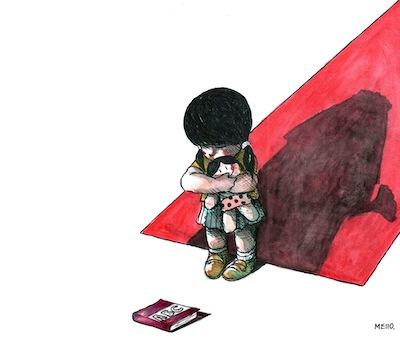

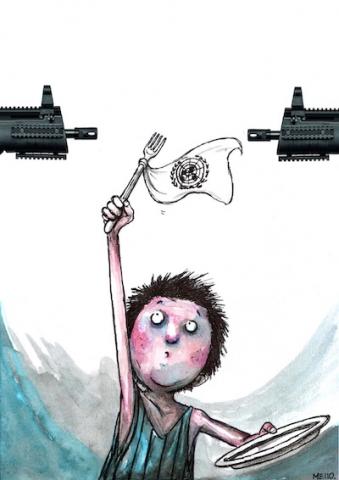
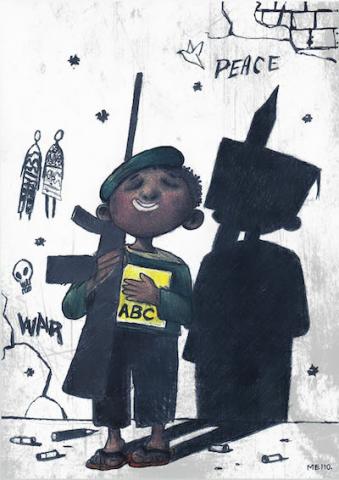
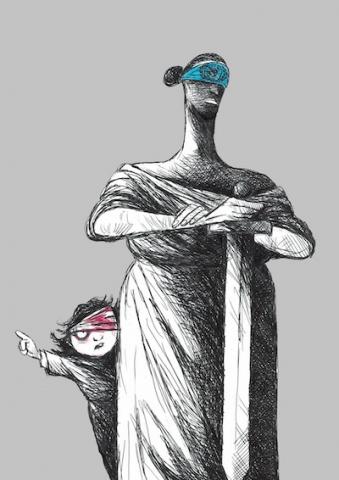
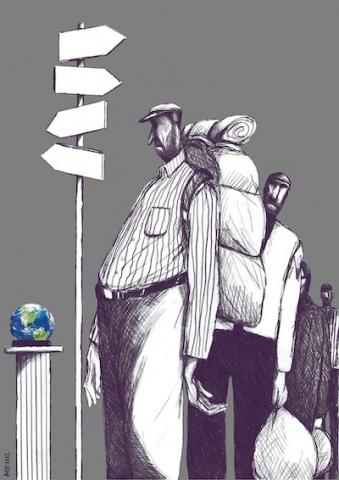
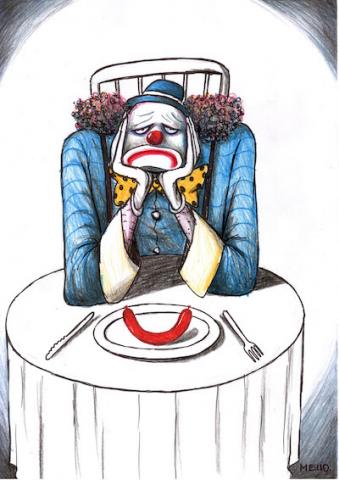
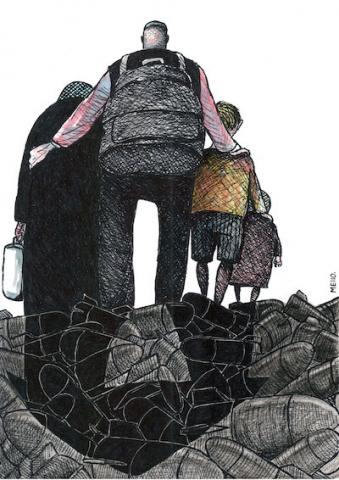
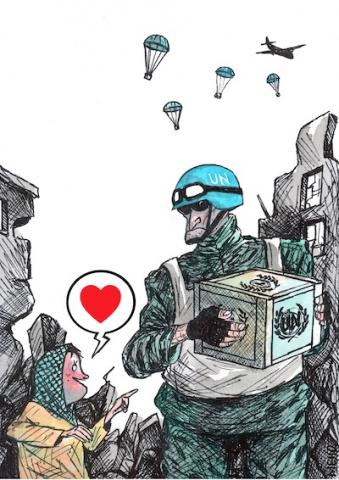
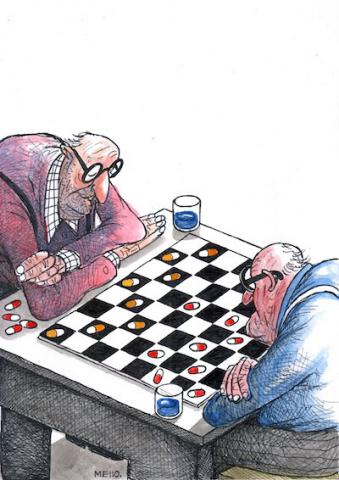
Interview with Silvano Melo
By Pepe Pelayo
The limit of humor is where your right ends and the right of the other begins.
In these dialogues ("crazy" conversations) that I have with comedians from different artistic manifestations and from different countries, to publish them here, in Humor Sapiens, it is the first time that I invite a Brazilian. I don't know why, since humor in Brazil has a high level of quality. I apologize for that little oversight. Although, without intending to justify myself, a few years ago I interviewed a few for another section (with a fixed questionnaire for everyone) and this space for dialogues is still relatively new (that's why I said "a little oversight").
Well, this introduction is due to the fact that I have the privilege, the honor and the pleasure of talking today with my friend Silvano Melo. Why did I choose him? Well, in 2015 I interviewed him (in the section I already mentioned) and I really liked his answers. For example, to my question, are comedians born or made?, he replied: "I think he was born with a vocation and over time he developed this talent through hard work and dedication", something that I share 100% with him. Well, I kept following him and admiring his work (I love his cartoons) and we've been connected for years.
So now I present to you, for the few humornauttas from Humor Sapiens who don't know him, Silvano Rosa Goncalves de Mello (he signs his work with the pseudonym "Melo"). This comedian was born...
PP: Sorry, my dear friend, but these formalities kill me. So I ask you, could you introduce yourself? I know it's not easy to speak publicly about one, but get me out of this predicament, please.
MELLO: Hello teacher! I tend to think that I was born drawing. I remember being 4 or 5 years old and making my drawings on the sidewalk, with charcoal and bricks. Drawing has always been part of my life. In some moments with greater intensity, others with less. I live in a very small town, called Jaboticatubas, in the state of Minas Gerais, and the people here are proud to see my drawings all over the world. I confess that I decided to dedicate myself to graphic humor very late, only after 2007, but since then I have used my drawings as my form of expression, as a tool to make people think, to provoke reflection, and sometimes to provoke a little laughter.
PP: Well, you know that I am of the opinion that one always seeks to make people laugh or smile, or even "smile" internally, or if not, what we do is not humor. Of course, the more you mix the elements to make people think, the critical elements, the percentage of humor in the work decreases, but humor cannot disappear. The message even gets stronger, also achieving even a little smile. And I think you always get all that with your work. By the way, has your way of making humor changed, has it evolved from its beginnings up to now?
MELLO: Yes, without a doubt. There was an evolution, a change, both in the line and in the form of expression. At first, my intention was just to make people laugh, to make a joke, with a more comical twist, with characters with big noses, without much concern for aesthetics. Today my drawings are different in terms of aesthetics, lines and the message it conveys is mostly critical, but if it manages to make people laugh, it gets even better!
PP: That's what I was telling you, you can do it. Because aesthetically your drawings are good, you make people laugh and smile and they make you reflect on each topic. But, did that arise only from you, or do you think you have a definite, clear influence from living or historical Brazilian colleagues?
MELLO: Influences are inevitable. I think I have many, both Brazilian and foreign. The great masters inspire us, they show us a path to follow until we find paths with our own pens, our own brushes. Without a doubt, I could name many of those who influenced me, but I will only mention a few so as not to extend myself too much: Ziraldo, Cau Gomez, Saul Steinberg, Quino, Dalcio, Boligán, Kambiz Dembakhsh, among many others.
PP: It's good that there are many, but I know of someone who also influenced you (you've told me so yourself on other occasions): my friend Ares. Well, then we can already say that you have a solid and fruitful career, therefore, I ask you: what has been the best and the worst moment in your career in humor?
MELLO: It is not possible to be well all the time. We are human, full of flaws, we have stress, we get angry with the dog, we lose patience with the boss at work, with the late bus and many other things of daily life. In any race we have our moments of euphoria and discouragement. I think my worst moment when working with humor is the lack of creativity, the lack of ideas, a good idea, a good joke, an effective critique. My work has to have this function, make you think, reflect and sometimes make you laugh. If that doesn't flow, that's too bad. But when these ideas flow, everything works out and it's just a pleasure to do what I love to do the most: draw!
PP: We all have those “bad” moments, don't worry. Now I want to know the following: comic strips, general humor cartoons, political satire, personal caricatures, editorial humor... Which one is more difficult for you to do? Which of them do you enjoy the most in your creation? Because?
MELLO: I feel good doing general humor, humor drawing with a critical approach, whose subject, the idea can be anything, any situation: children, environment, internet, social networks, politics, human rights, war, peace, family, animals, etc.
I think the most difficult thing for me is the personal caricature. The caricature should not be just a funny portrait, a joke with someone, but should bring the soul of the character, his personality, his essence and that is very difficult to achieve. There are great masters in this area, whom I greatly admire, but for me it is a more difficult battle!
It's not that I don't like drawing in these other areas. I do a bit of everything, but humorous drawing is where I feel good, free!
PP: Perfect. My friend, could you now tell an anecdote, be it funny, or witty, or curious, that you have lived within your career in humor?
MELLO: I can't say it's an anecdote, but a situation that fills me with pride. They invited me to exhibit my drawings in a school on the occasion of Book Day. That day many people, most of whom already knew me by sight, found out what a humor drawing was and that I made such drawings. Everyone was amazed and wanted to know my story, the story of my drawings and the meaning of each of them!
From that day on, my little town entered the history of graphic humor and I became a source of pride for this town and this place that I love so much!
PP: You're right, it's not an anecdote, but if it were me I would have told it too. Dear colleague, we know that the ideal work of graphic humor is the one that shows a perfect invoice and content that makes us smile and think. But often we see a magnificent idea expressed with a poor execution and vice versa, an impeccable work in terms of form, but with a weak idea. Which of these last two variants do you accept better? Or none or them? Because?
MELLO: The ideal cartoon should apparently be one with a good idea with a very good aesthetic, but this is not always possible! Few are those who manage to do this!
I believe that a beautiful drawing, with a beautiful aesthetic, cannot save a bad idea, but a good idea can save a bad drawing! The idea brings reflection, makes you think and the drawing makes that reflection visual.
PP: Well, there I am with you 50 and 50; that is to say, we agree that the ideal graphic humor has to have a good form and good content. Where I differ is that I can't stand a good idea made with a bad drawing. I can not see it. Nor a good way without an idea, of course. The message that we want to transmit in a work, for me I repeat, has to be of a good level in everything, so that more arrives. But that doesn't mean I'm right, of course. Obviously no one can eliminate anyone for this or that. And speaking of the subject, do we have a lot of censorship in the media and in the public these days? Lots of self-censorship? And to use the fashionable question: what are the limits of humor?
MELLO: Censorship, in some form, has always existed. Today, it has definitely gotten worse. Sometimes the result, the consequences are violent.
Some artists, in any field, I think, for fear of their freedom, their safety or even the safety of their relatives, end up censoring themselves to avoid such consequences.
I believe that the limit of humor is where your right ends and the right of the other begins. It is not necessary to attack or offend to make humor.
Humor is a powerful weapon, for critical thinking, for reflection, for laughter, but never a tool for disrespect, for offense!
PP: I couldn't agree more with you! You said it excellently. So, following that line, how do you see the health of graphic humor today? Do you see more talent in its creators than before? Is the complaint of many colleagues who claim not to have spaces true? Internet is the solution? How do you see the future in this modality?
MELLO: Great talents will always exist. Some go, some come! The memories remain. Each era will have its great artists. Today, censorship may obscure the appearance of good artists a bit, but there certainly are plenty of them everywhere.
There is certainly much less space than before. In Brazil, even the big names in graphic humor no longer have space in newspapers and magazines.
The internet can often be seen as a villain, but it's also the only option for the vast majority of cartoonists. Through the internet, many manage to publicize their work, participate in events all over the world. Everyone has to find their own way to express themselves, especially in the midst of the crises that have always existed and will always exist.
PP: It's true too. Well, what would you advise those who are new to this world of graphic humor?
MELLO: He draws a lot! Anytime, anywhere! Study, watch! Watch movies, read, listen to music, give it a try! Do everything with dedication and respect! Learn to accept criticism and use it in your work, for your growth! Make your work something you do with pleasure and the results will come naturally, in due time!
PP: Very good. Now, within humor, what would you like to do that you haven't done? (It can even be to dabble in other modalities).
MELLO: Sometimes many ideas come to mind and I hope many of them come true! I want to create stories with images only, publish a new book with my drawings and even, who knows, illustrate children's books, illustrate my own texts, my own stories!
PP: Well, looking at your career, I'm sure you'll make it, my friend. And to close this dialogue, is there any question that I have not asked you and that you would have liked me to ask you? If so, can you answer it now as well?
MELLO: Well, I think you could ask me: what is making graphic humor?
And my answer would be: for me it is like telling the world what I think, how I think, through images that often say more than many words. They say, in my case, without using the words themselves, making each sketch something universal, timeless. Making graphic humor is giving the viewer the opportunity to see the world, the situations that surround him, the events that guide his life from another angle, with another look, more critical, personal, reflective and sometimes also funny!
PP: Thanks, friend.
MELLO: First of all, I want to tell mestre Pepe that I am honored to participate in this very important project and I am grateful for this opportunity.
It's always great to see people like mestre Pepe always involved in defense, in valuing cartoonists and graphic humor. In the midst of so many mishaps that occur, such as censorship, lack of space in the editorial media, devaluation in relation to artists, art, projects that seek to rescue the value that graphic humor represents are always very welcome!
Thanks for everything! Greetings to all from Brazil!
PP: Thank you for your nice words. I reiterate what I said at the beginning: it is an honor and a pleasure to have talked with you, one of the comedians I like the most in Brazil and the world.
I wish you to continue your awards and distinctions. And here is Humor Sapiens always with its doors open for you.
A hug, friend Mello.
(This text has been translated into English by Google Translate)

